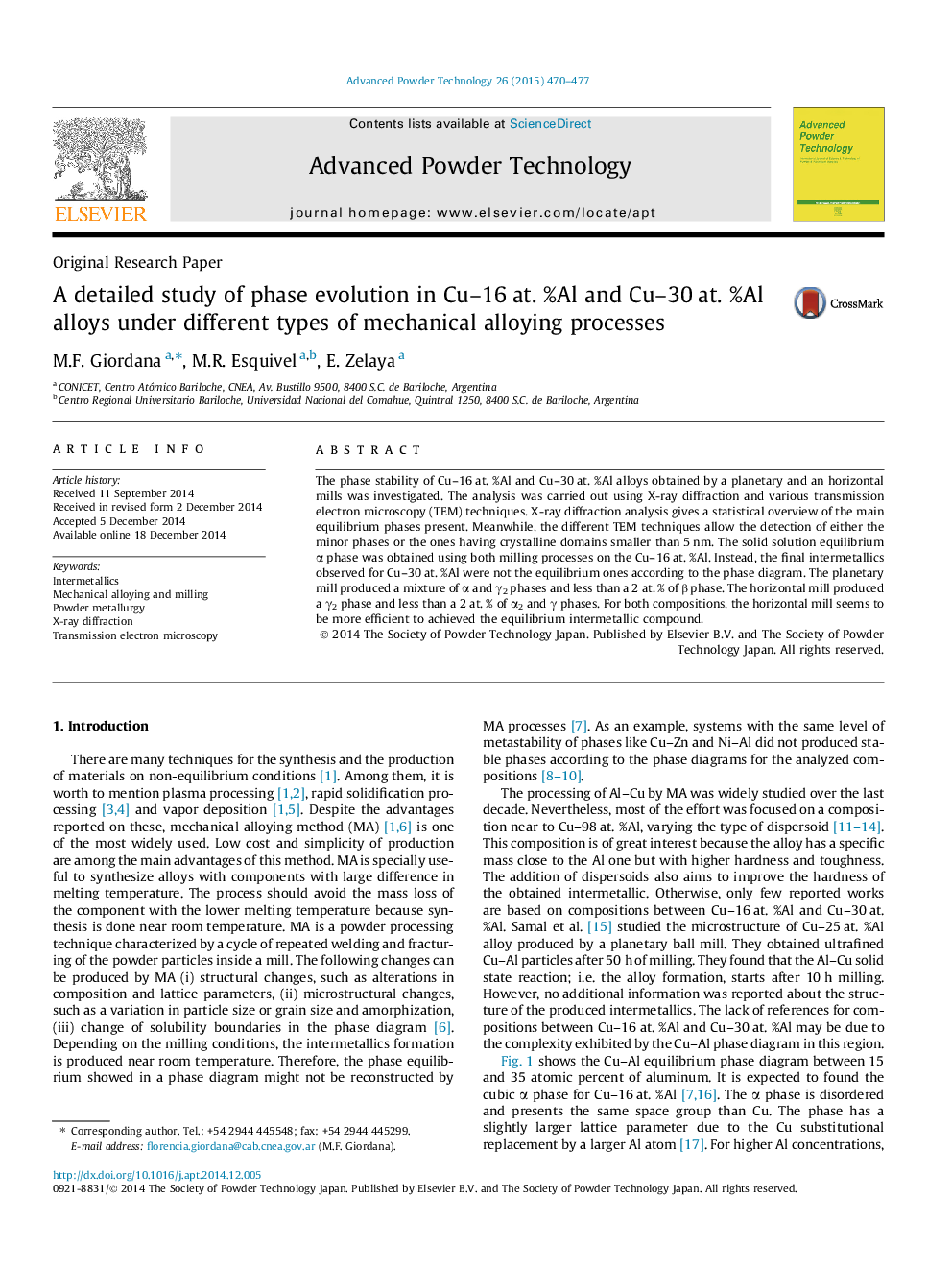| Article ID | Journal | Published Year | Pages | File Type |
|---|---|---|---|---|
| 144453 | Advanced Powder Technology | 2015 | 8 Pages |
•A stable intermetallic was obtained for Cu–16 and 30 at. %Al by mechanical alloying.•The presence of low temperature γ′ and high temperature β was detected for 30 at. %Al.•The equilibrium phases were found by TEM for Cu–30 at. %Al and horizontal mill.•TEM microstructure is not consistent with nucleation and growth process.•Final phases are formed by grain boundary diffusion.
The phase stability of Cu–16 at. %Al and Cu–30 at. %Al alloys obtained by a planetary and an horizontal mills was investigated. The analysis was carried out using X-ray diffraction and various transmission electron microscopy (TEM) techniques. X-ray diffraction analysis gives a statistical overview of the main equilibrium phases present. Meanwhile, the different TEM techniques allow the detection of either the minor phases or the ones having crystalline domains smaller than 5 nm. The solid solution equilibrium α phase was obtained using both milling processes on the Cu–16 at. %Al. Instead, the final intermetallics observed for Cu–30 at. %Al were not the equilibrium ones according to the phase diagram. The planetary mill produced a mixture of α and γ2 phases and less than a 2 at. % of β phase. The horizontal mill produced a γ2 phase and less than a 2 at. % of α2 and γ́ phases. For both compositions, the horizontal mill seems to be more efficient to achieved the equilibrium intermetallic compound.
Graphical abstractFigure optionsDownload full-size imageDownload as PowerPoint slide
